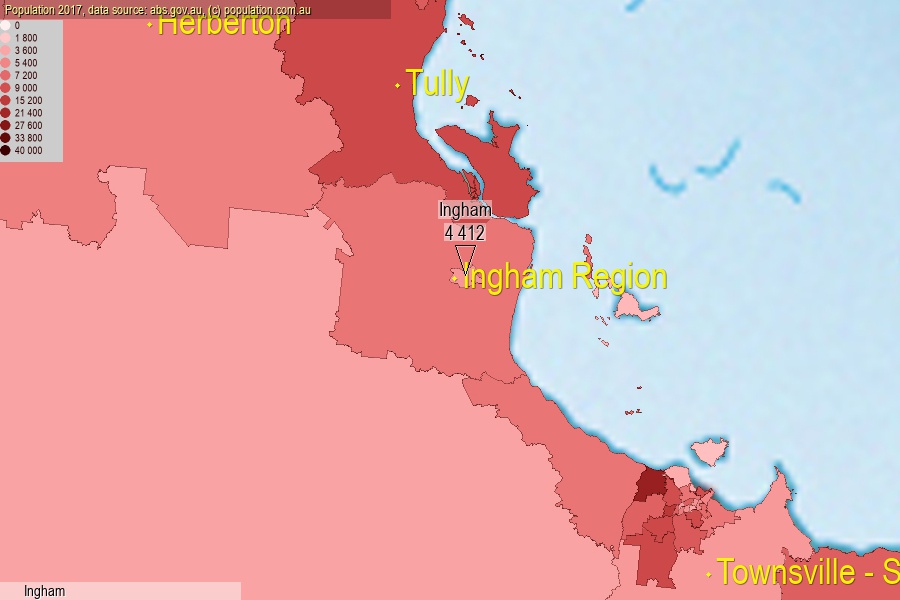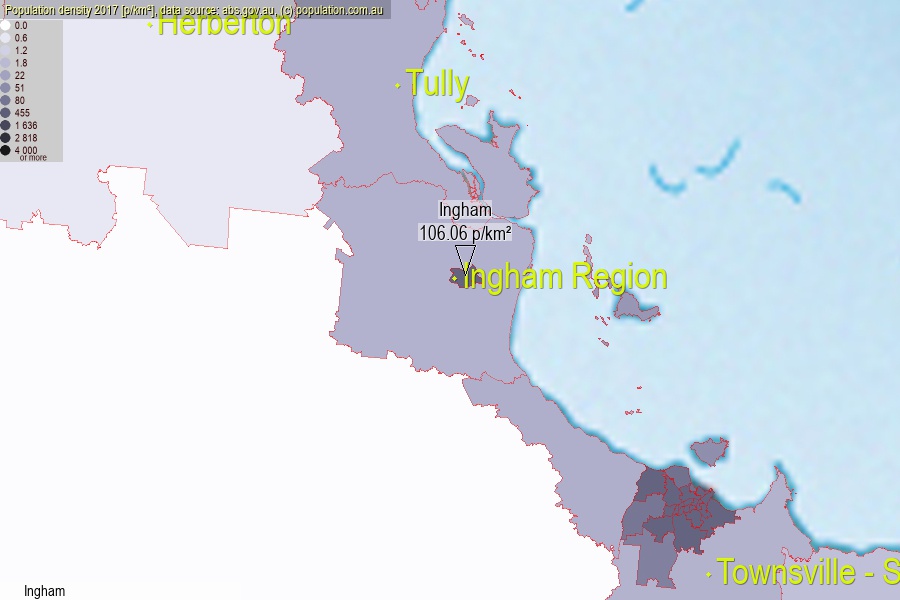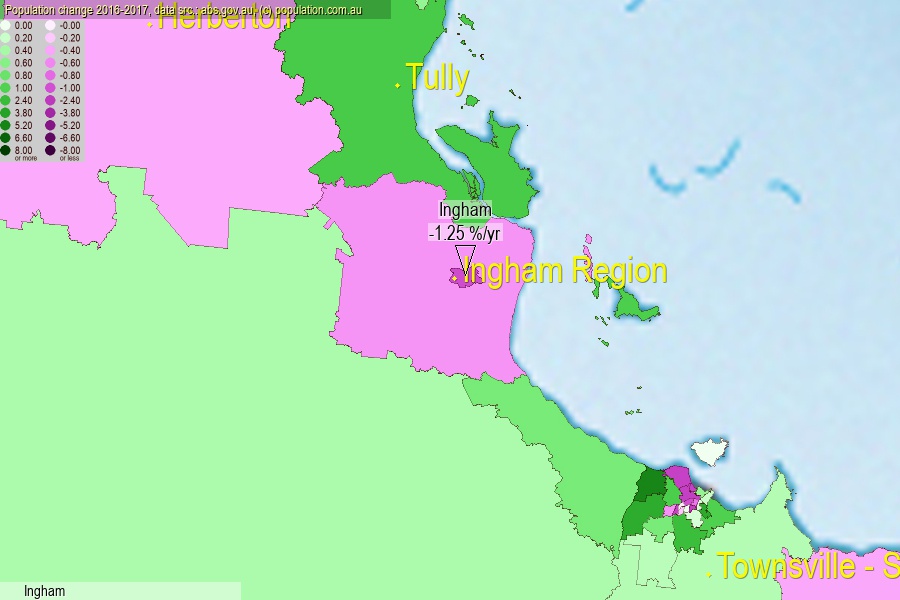 population.com.au
population.com.auLast official estimated population of Ingham (as Statistical Area Level 2) was 4 412 people (on 2017-06-30)[2]. This was 0.02% of total Australian population and 0.088% of QLD population. Area of Ingham is 41.60 km², in this year population density was 106.06 p/km² . If population growth rate would be same as in period 2016-2017 (-1.25%/yr), Ingham population in 2025 would be 3 989. [0]



Click to enlarge. Ingham is located in the center of the images.
Population [people], population density [p./km²] and population change [%/year] [2]
View borders » (new window) [4]
[1991-1992] -0.20 %/Yr.
[1992-1993] -0.45 %/Yr.
[1993-1994] -0.53 %/Yr.
[1994-1995] -0.38 %/Yr.
[1995-1996] +0.40 %/Yr.
[1996-1997] -1.59 %/Yr.
[1997-1998] -1.91 %/Yr.
[1998-1999] -2.10 %/Yr.
[1999-2000] -2.10 %/Yr.
[2000-2001] -1.97 %/Yr.
[2001-2002] -0.64 %/Yr.
[2002-2003] +0.04 %/Yr.
[2003-2004] -0.69 %/Yr.
[2004-2005] +0.18 %/Yr.
[2005-2006] +0.39 %/Yr.
[2006-2007] -0.10 %/Yr.
[2007-2008] -0.53 %/Yr.
[2008-2009] -0.33 %/Yr.
[2009-2010] -0.18 %/Yr.
[2010-2011] +0.43 %/Yr.
[2011-2012] -0.49 %/Yr.
[2012-2013] -2.50 %/Yr.
[2013-2014] -1.68 %/Yr.
[2014-2015] -1.82 %/Yr.
[2015-2016] -2.66 %/Yr.
[2016-2017] -1.25 %/Yr.
[0] Calculated with linear interpolation from officially estimated population
[1] Read more about SA2 and Australian Statistical Geography Standard (ASGS) on abs.gov.au
[2] Population data from Australian Bureau of Statistics (Population and density: 2017; change: 2016-2017)
[3] Digital Boundaries: Australian Statistical Geography Standard (ASGS) 2016.
[4] Border coordinates are simplifyed using Ramer-Douglas-Peucker algorithm.